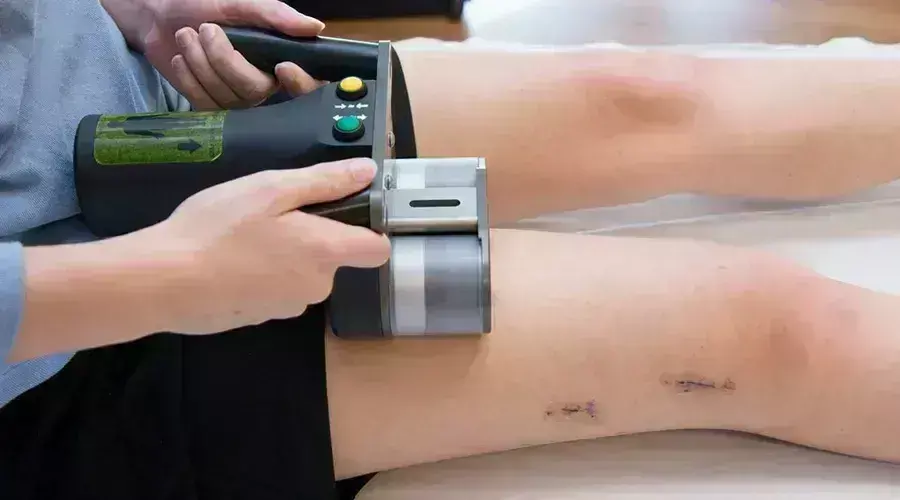- Home
- Medical news & Guidelines
- Anesthesiology
- Cardiology and CTVS
- Critical Care
- Dentistry
- Dermatology
- Diabetes and Endocrinology
- ENT
- Gastroenterology
- Medicine
- Nephrology
- Neurology
- Obstretics-Gynaecology
- Oncology
- Ophthalmology
- Orthopaedics
- Pediatrics-Neonatology
- Psychiatry
- Pulmonology
- Radiology
- Surgery
- Urology
- Laboratory Medicine
- Diet
- Nursing
- Paramedical
- Physiotherapy
- Health news
- Fact Check
- Bone Health Fact Check
- Brain Health Fact Check
- Cancer Related Fact Check
- Child Care Fact Check
- Dental and oral health fact check
- Diabetes and metabolic health fact check
- Diet and Nutrition Fact Check
- Eye and ENT Care Fact Check
- Fitness fact check
- Gut health fact check
- Heart health fact check
- Kidney health fact check
- Medical education fact check
- Men's health fact check
- Respiratory fact check
- Skin and hair care fact check
- Vaccine and Immunization fact check
- Women's health fact check
- AYUSH
- State News
- Andaman and Nicobar Islands
- Andhra Pradesh
- Arunachal Pradesh
- Assam
- Bihar
- Chandigarh
- Chattisgarh
- Dadra and Nagar Haveli
- Daman and Diu
- Delhi
- Goa
- Gujarat
- Haryana
- Himachal Pradesh
- Jammu & Kashmir
- Jharkhand
- Karnataka
- Kerala
- Ladakh
- Lakshadweep
- Madhya Pradesh
- Maharashtra
- Manipur
- Meghalaya
- Mizoram
- Nagaland
- Odisha
- Puducherry
- Punjab
- Rajasthan
- Sikkim
- Tamil Nadu
- Telangana
- Tripura
- Uttar Pradesh
- Uttrakhand
- West Bengal
- Medical Education
- Industry
Clinical results of STRYDE Magnetic internal nail comparable to PRECICE nail for femoral lengthening

Magnetic internal lengthening nails (MILNs) have been used for femoral lengthening to avoid complications associated with external fixation. The titanium version of the MILN (PRECICE®) has been in use since 2011 but had limitations (50–75 lb) in post-operative weight bearing. A new stainless-steel version of the MILN (STRYDE®) allows 150–250 lb of post-operative weight bearing.
Sherif Galal et al conducted a study to compare the outcomes of using these two different MILNs for both unilateral and bilateral femoral lengthening. The article has been published in 'Archives of Orthopaedic and Trauma Surgery'.
A single-center, retrospective cohort study was conducted in which patients' records were reviewed from the period from January 2017 to March 2020. A total of 66 femoral lengthening procedures were included in the study and were divided into two groups: STRYDE® group (30 femora) and PRECICE® group (36 femora). Outcomes assessed were the 6-months post-operative Limb Deformity-Scoliosis Research Society (LD-SRS) Score, adjacent joint range of motion (ROM), average distraction rate, bone healing index (BHI), and complications.
The results of the study were:
• No statistically significant difference was found between the two groups in regard to the (LD-SRS) score, hip ROM, or knee ROM.
• Statistically significant differences were found between the two groups in regard to BHI (average of 0.84 months/cm and 0.67 months/cm for STRYDE® and PRECICE®, respectively) and distraction rate (average of 0.6 mm/day and 0.9 mm/day for STRYDE® and PRECICE®, respectively).
• No mechanical nail complications were reported in the STRYDE® group compared to three events of nail failure in the PRECICE® group.
• One femur in the PRECICE® group needed BMAC injection for delayed healing compared to four femurs in the STRYDE® group.
The authors concluded that – "The STRYDE® MILN yields comparable clinical scores and functional results to those of PRECICE® MILN. We found two main advantages to using the STRYDE® MILN; fewer mechanical nail complications and the fact that patients with STRYDE® IMLNs were permitted to be fully weight bearing allowed them to resume activities of daily living more quickly compared to patients with PRECICE® MILNs. However, STRYDE MILNs are associated with slower healing rate (larger BHI), which explains surgeons' tendency to distract at a slower rate when using this device.
"Level of evidence Level III, Therapeutic study.
Further reading:
STRYDE versus PRECICE magnetic internal lengthening nail for femur lengthening Sherif Galal, Jonggu Shin et al Archives of Orthopaedic and Trauma Surgery (2022) 142:3555–3561 https://doi.org/10.1007/s00402-021-03943-8
MBBS, Dip. Ortho, DNB ortho, MNAMS
Dr Supreeth D R (MBBS, Dip. Ortho, DNB ortho, MNAMS) is a practicing orthopedician with interest in medical research and publishing articles. He completed MBBS from mysore medical college, dip ortho from Trivandrum medical college and sec. DNB from Manipal Hospital, Bengaluru. He has expirence of 7years in the field of orthopedics. He has presented scientific papers & posters in various state, national and international conferences. His interest in writing articles lead the way to join medical dialogues. He can be contacted at editorial@medicaldialogues.in.
Dr Kamal Kant Kohli-MBBS, DTCD- a chest specialist with more than 30 years of practice and a flair for writing clinical articles, Dr Kamal Kant Kohli joined Medical Dialogues as a Chief Editor of Medical News. Besides writing articles, as an editor, he proofreads and verifies all the medical content published on Medical Dialogues including those coming from journals, studies,medical conferences,guidelines etc. Email: drkohli@medicaldialogues.in. Contact no. 011-43720751


